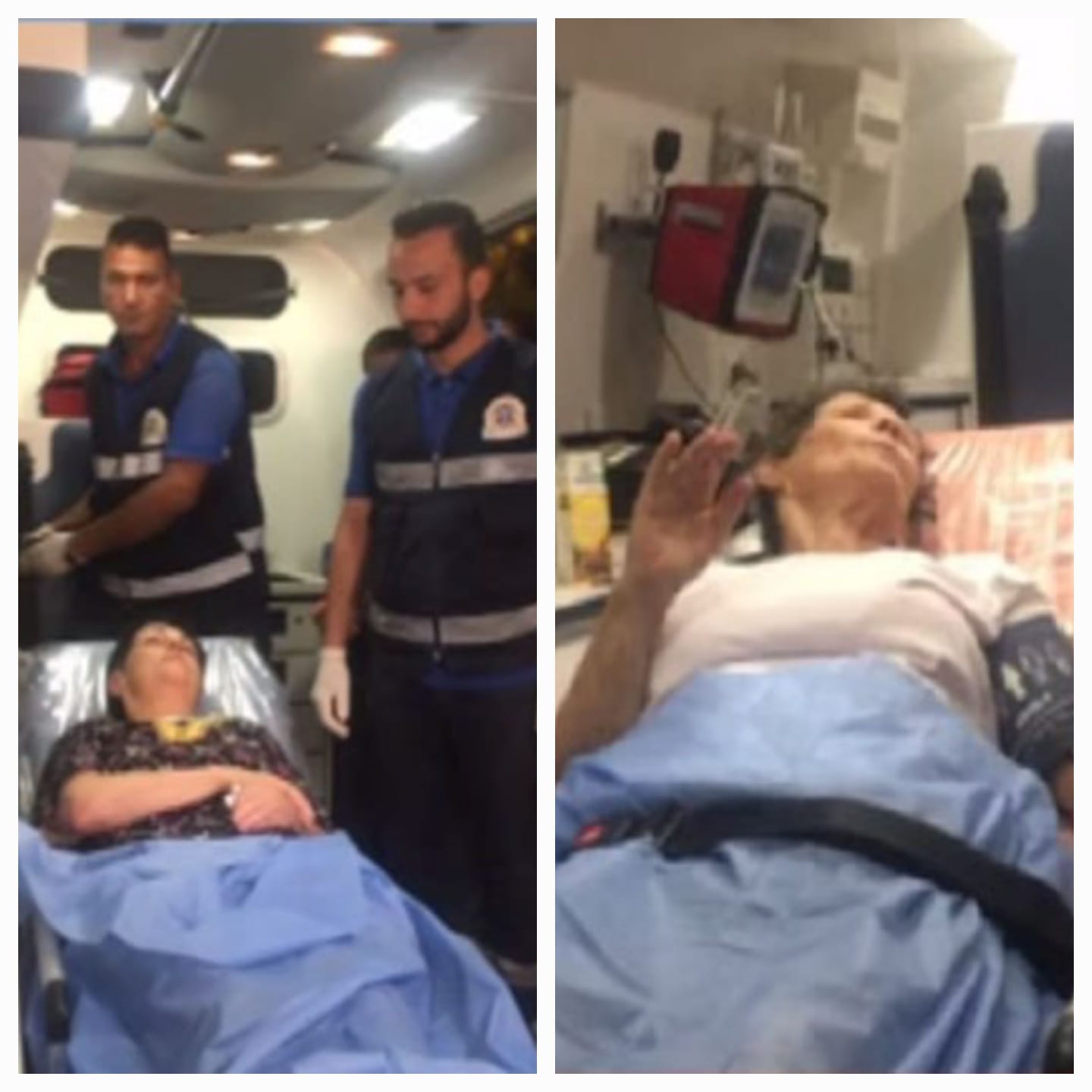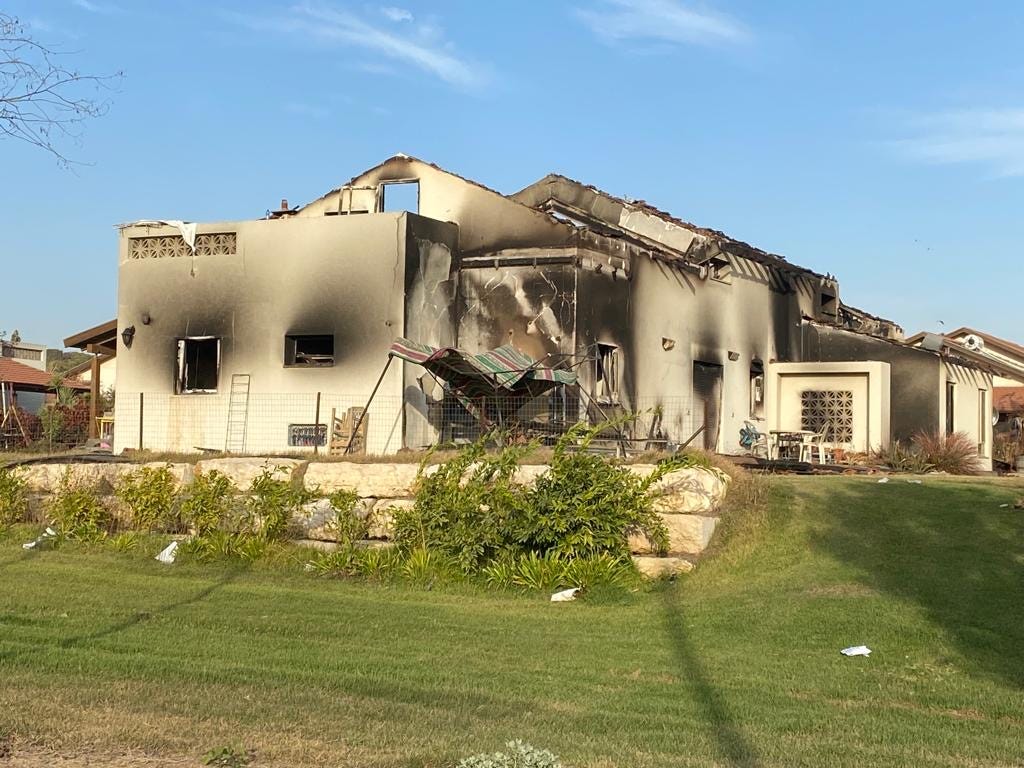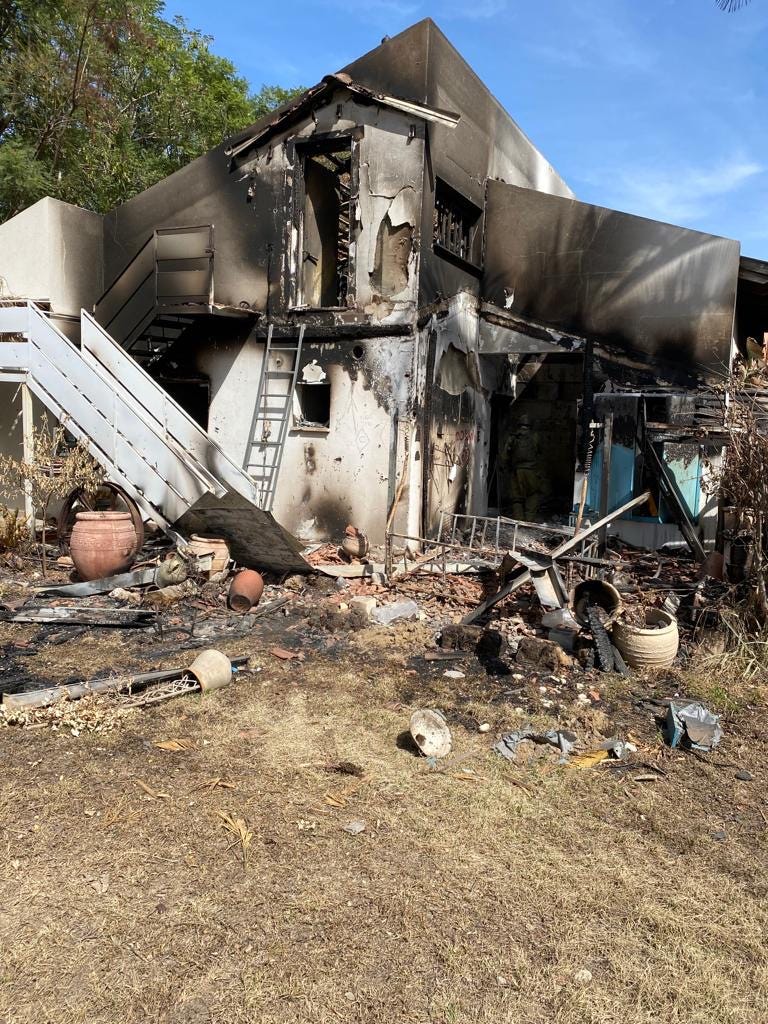DAY 17 OF THE GAZA WAR:Two Hostages Released-Ground Assaults on Pause
Tel Aviv Diary October 23, 2023
For the entire day, the question on the minds of every Israeli was: Why hasn't Israel commenced the ground war? Various rumors circulated throughout the day. One prevalent rumor suggested the US had requested a 48-hour delay before Israel initiated its ground operation.
It remains unclear if the US request was meant to extend negotiations regarding the hostages, or if the US intended to move additional military assets into the region, including another Patriot Battery and a THAAD anti-missile battery. These assets are aimed primarily to enhance the protection of US properties, which have already been targeted. Once deployed, these assets will be situated in Israel and integrated into the regional defense system. Tonight US bases in Syria, and Iraq were attacked by drones and missiles sent by Shiite Militia.
By evening, rampant rumors suggested a significant release of hostages was imminent, focusing primarily on those holding foreign passports. The number mentioned was 50. However, around 9 PM, Hamas announced the release of just two female hostages: Nurit Cooper, 80, and Yocheved Lifshitz, 85. It is not clear if the release of all foreign passport holders being held captive is still possible, as initial rumors intimated. The 48-hour window requested by the US concludes tomorrow morning
.
The families of the hostages are doing their utmost to ensure the issue of their loved ones remains at the forefront of everyone's thoughts. Today, they highlighted Ohad Munder-Zichri, who celebrated his 9th birthday, by asking people throughout the country to place a balloon (of any color) outside their homes, in Ohad’s honor.
Today, Tel Aviv and the country's center experienced another relatively calm day. The Tel Aviv region saw no rocket attacks, marking 48 hours of quiet. However, rocket attacks did target Ashkelon, Beersheva, and the communities around Gaza. No injuries were reported. Notably, damage was sustained by the Holocaust museum at Yad Mordechai (Located 10 km south of Ashkelon). Two UAVs, launched by Hamas towards Sderot, both were intercepted and neutralized by Israeli missiles.
In the North, Hezbollah dispatched an unmanned aircraft towards the Haifa Bay Area, north of Haifa. This aircraft was subsequently downed by an Israeli missile.
The US has dispatched high-ranking military officers experienced in urban warfare to offer advice and pose challenging questions.
Prime Minister Netanyahu met with Dutch Prime Minister Mark Rutte who came to visit and show solidarity with Israel.
A college friend of mine is who is in his late 60’s is actually serving in Reserves in the Gaza area and sent me these pictures
:
Before the war, my weekly Tel Diary featured Israeli companies receiving funding. Today, I've chosen to report on one such story. While the Israeli economy is largely stagnant, some start-ups continue to make progress. Here’s one:
Batam, a technology company that specializes in the development, production, and marketing of advanced communication, cyber systems and medical equipment for laboratory tests, announced today (Monday) that Ador Diagnostics, a company included in the Batam group, has raised $7.5 million. Out of this amount, $3.5 million is an investment by the Batam group.
•••∞•••∞•••∞•••∞•••∞•••∞•••∞•••∞•••∞•••∞•••∞•••∞•••∞•••∞•••∞•••∞•••∞•
In response to the initial draft of my Brief Overview of the Arab-Israeli Conflict I shared yesterday, I’ve received several requests for clarification and additional information on the Palestinian refugees. So, let’s delve deeper …
The initial question sought to understand the reason for the presence of Palestinian refugees.
To provide some context, from the moment the UN voted to approve its Partition Plan, a civil war ensued in Palestine. With the onset of the civil war, the affluent were the first to leave, promptly boarding ships bound for safer locations. The violence often erupted in populated villages, and civilians became casualties. The death of civilians, notably those in Deir Yassin, instilled fear among many Arabs, leading them to conclude that remaining in their homes was unsafe, prompting their exodus. This sentiment was particularly pronounced in the vicinity of the road into Jerusalem.
A significant portion of the refugees emerged during this early phase of the war. The final wave of refugees chose to depart, as Israel gained the upper hand in the war. At this juncture, it became evident it was in Israel's interest to reduce the Arab populace in specific regions. Some Arab inhabitants of Ramle and Lod were involuntarily expelled by the Israeli military. In the Galilee, while almost all the Christians and Druze were permitted to remain. Residents of a number of Muslim villages were expelled — though residents of many other Muslim villages remained.
All in all, while the exact figure remains a topic of debate, the most reliable estimate suggests that 720,000 refugees were produced by war's end. Upon the war's conclusion, Israel faced international pressure to permit some of the refugees to return. Succumbing to U.S. pressure, Israel consented to admit up to 100,000 refugees, in exchange for peace accords with the Arab nations, and an agreement for the settlement of remainder of the refugees in adjacent Arab nations. Israel was never called upon to accommodate the 100,000 refugees, as the Arab nations refused to ink peace treaties, opting for ceasefire pacts instead.
To assist the refugees, the United Nations inaugurated the United Nations Relief and Works Agency for Palestine Refugees in the Near East (UNRWA) in 1948. UNRWA's mission was to offer employment, direct relief, education, and healthcare to the refugees. Unlike the UNHCR, established in 1950 with a mandate to resettle all other refugees in new nations, UNRWA is barred from such activities. Any endeavors by UNRWA to devise resettlement strategies for the refugees were consistently obstructed by the Arab host countries. UNRWA is unique as it is the sole refugee agency, in history, wherein refugee status is hereditary, resulting in five successive generations of refugees. Presently, these refugees, or more accurately their descendants, reside in Lebanon, Syria, Jordan, the West Bank, and Gaza.







